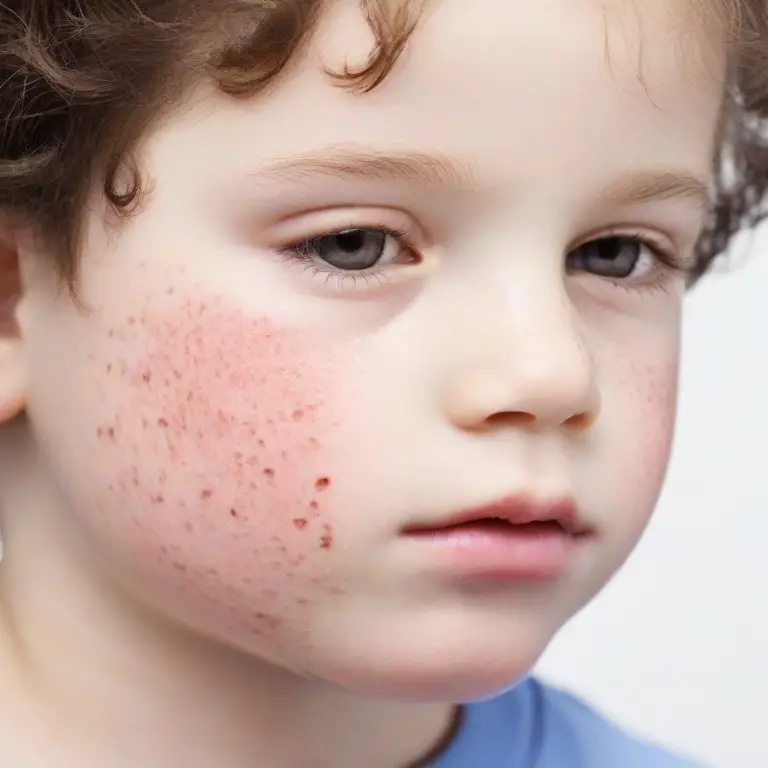Table of Contents
Introduction:
Impetigo, a common and contagious bacterial skin infection, primarily affects children but can occur in individuals of any age. Recognized by its characteristic sores and blisters, impetigo poses challenges not only due to its physical symptoms but also because of its potential to spread rapidly. In this comprehensive article, we will delve into the intricacies of impetigo, exploring its causes, symptoms, treatment options, and prevention strategies to foster a better understanding of this prevalent skin condition.
What is Impetigo?
this is a bacterial skin infection caused by either Staphylococcus aureus or Streptococcus pyogenes bacteria. It often enters the skin through cuts, abrasions, or insect bites, leading to the development of red sores that can rupture and form honey-colored crusts. While this is more common in children, particularly those between 2 and 6 years old, it can affect individuals of any age.

You can also read about Urticaria Symptoms, Causes and Treatment click here
Types:
- Non-bullous:
Description: Non-bullous impetigo is the more common form, accounting for about 70% of impetigo cases. It typically starts as small red sores or blisters that quickly rupture, leaving behind a characteristic honey-colored crust. The affected areas are usually itchy, and the rash can spread to other parts of the body.
Causative Bacteria: The most common bacteria responsible for non-bullous impetigo are Staphylococcus aureus and Streptococcus pyogenes (Group A Streptococcus).
2. Bullous:
Description: Bullous impetigo is less common but tends to be more severe. It presents with larger fluid-filled blisters that are clear and do not contain pus. These blisters can be surrounded by red and inflamed skin. Like non-bullous impetigo, the blisters eventually rupture, forming a yellowish-brown crust.
Causative Bacteria: Bullous impetigo is primarily caused by strains of Staphylococcus aureus that produce specific toxins responsible for the blister formation.
Both types of impetigo are highly contagious, and the infection can spread through direct contact with the skin lesions or through contact with contaminated objects like towels, clothing, and toys. Scratching the affected areas can also contribute to the spread of the infection.
In addition to these two main types, sometimes categorized further based on the appearance of the skin lesions. These subtypes include:
- Ecthyma: Ecthyma is a more severe form of impetigo that extends into the deeper layers of the skin, causing painful ulcers or sores. It can lead to scarring if not promptly treated.
- Gianotti-Crosti Syndrome (GCS): While not a type of impetigo per se, GCS is a distinct skin condition that can resemble impetigo. It is characterized by small, firm, red or skin-colored bumps, often on the face, buttocks, and extensor surfaces of the limbs. It is associated with certain viral infections, particularly Epstein-Barr virus.
Causes and Risk Factors:
The primary causative agents are Staphylococcus aureus and Streptococcus pyogenes bacteria. The infection is typically spread through direct contact with an infected person or by touching contaminated surfaces. Several risk factors increase the likelihood of developing impetigo:
- Age:Children, especially those in crowded settings like schools or daycare, are more susceptible.
- Wounds or Skin Conditions:Cuts, scratches, insect bites, or existing skin conditions provide entry points for bacteria.
- Crowded Living Conditions:Overcrowded environments, such as schools or residential facilities, can facilitate the spread of bacteria.
- Compromised Immune System:Individuals with weakened immune systems are at higher risk.
- Warm and Humid Weather:Certain environmental conditions may favor bacterial growth.
Symptoms:
The symptoms can vary based on the type of infection but often include:
- Red Sores: Small red sores that quickly rupture and ooze fluid.
- Crust Formation: Formation of honey-colored crusts over the sores.
- Itching: Mild to moderate itching may be present.
- Enlarged Lymph Nodes: Swelling of lymph nodes in the affected area.
- Bullous Impetigo-Specific Symptoms: Large, fluid-filled blisters in the case of bullous impetigo.
Diagnosis:
Diagnosing is typically based on a visual examination of the sores and crusts. In some cases, a healthcare professional may take a swab of the affected area to identify the specific bacteria causing the infection. This helps determine the most effective course of treatment.
Treatment:
The treatment of impetigo usually involves antibiotics, which may be administered topically or orally, depending on the severity of the infection. Common approaches include:
- Topical Antibiotics: Applied directly to the affected area multiple times a day.
- Oral Antibiotics: Cephalexin or Dicloxacillin: Prescribed for more extensive or severe cases.
- Hygiene Measures: Keeping the affected area clean by gently washing with soap and water.
- Avoiding Scratching: Encouraging individuals, particularly children, to avoid scratching the affected area to prevent the spread of bacteria.
- Isolation: Individuals with impetigo should avoid close contact with others until the infection is no longer contagious.
Prevention Strategies:
Preventing the spread of impetigo involves adopting certain hygiene and lifestyle measures:
- Frequent Handwashing: Regular handwashing with soap and water helps prevent the spread of bacteria.
- Prompt Wound Care: Cleaning and covering cuts, scratches, or insect bites to prevent bacterial entry.
- Avoiding Shared Items: Avoid sharing towels, clothing, or personal items, especially in communal settings.
- Maintaining Clean Living Spaces: Regular cleaning and disinfection of living spaces, particularly in crowded environments.
- Trimming Nails: Keeping nails short to minimize the risk of scratching and spreading the infection.
Complications:
While this is generally a mild and easily treatable condition, complications can arise in some cases, including:
- Cellulitis: Bacterial infection spreading to the surrounding skin.
- Post-Streptococcal Glomerulonephritis: A rare but serious complication affecting the kidneys.
- Scarring: Severe cases may lead to scarring, particularly if the sores are scratched and not treated promptly.
Living with Impetigo:
With proper and timely treatment, this is typically a self-limiting condition. It is essential to complete the prescribed course of antibiotics and follow hygiene recommendations to prevent recurrence and the spread of infection. Parents of children with impetigo should communicate with schools or childcare providers to prevent outbreaks in communal settings.
Conclusion:
Though common and often mild, demands prompt attention and appropriate treatment to prevent complications and minimize its spread. Understanding the causes, recognizing symptoms, and adopting preventive measures are key elements in managing and living well with impetigo. Seeking medical advice for timely diagnosis and treatment ensures a swift resolution of symptoms, allowing individuals to return to their daily lives with confidence and comfort.
you can read more about Impetigo to click here


2 thoughts on “Impetigo: Symptoms, Causes, Treatment, and Prevention Strategies”